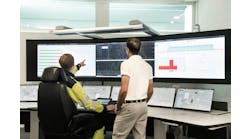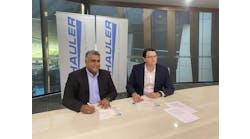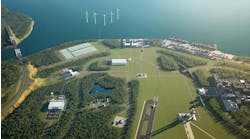Boston, Mass., Washington, DC, & Long Beach, Calif. – At the 2007 Solar Power Conference and Expo, North America’s largest solar energy event, Sensicast Systems, provider of turnkey wireless sensor network systems, announced the availability of the latest addition to its family of SensiNet Green Solutions for sustainable enterprises and renewable energy: a system for string-level monitoring of photovoltaic (PV) solar power.
The new Sensicast solution is based upon newly available SensiNet DC Voltage and Current Smart Sensors for string-level monitoring of photovoltaic (PV) solar power generating systems. Housed in custom, patent-pending NEMA-4-compliant enclosures for outdoor use, the DC Voltage and Current sensors work in concert with other SensiNet components including temperature and humidity sensors, mesh repeaters, gateways and services software to provide a comprehensive system for power metering and for revenue-grade monitoring of commercial solar electric systems.
Builders of smart buildings are increasingly deploying PV solar-derived electricity, whose low-carbon footprint makes it an attractive, renewable electricity source to power lighting, appliance and equipment operation, even electricity-intensive systems such as heating, air conditioning and hot water. By capturing real-time data reflecting the condition of photovoltaic cells and panels, SensiNet monitors the operating efficiency of PV systems and detects problems that can lead to inefficient operations. SensiNet automates the monitoring process and reports the level of energy production, automatically logging and notifying maintenance personnel, and producing automatic maintenance dispatches.
“Investing in systems that support the efficiency and reliability of renewable energy gives businesses tangible financial, operational and environmental benefits,” said Gary Ambrosino, CEO of Sensicast. “By automating the task of detecting problems and dispatching maintenance personnel with information on their precise location and cause, Sensicast eliminates the time-consuming, often painful ‘search and identify’ mode of fixing PV arrays and panels in use today. Our SensiNet Green Solutions give owners and operators an easy way to monitor their PV solar systems so they can maintain them at maximum efficiency to renewable revenue through renewable energy,” said Ambrosino.
Through its ability to monitor and report PV system conditions and make system data available to building automation applications, SensiNet offers a valuable means to maximize the efficiency of solar systems used for energy self-sufficiency and revenue production (by offsetting the use of utility grid-provided electricity). Through its use of a common platform, SensiNet PV Solar solutions easily integrate with other SensiNet systems for building monitoring, manufacturing, and commissioning.
Sensicast has partnered with Live Data Systems (www.greenbuildingmonitoring.com) in the development of its SensiNet PV Solar system. The first installation of the PV Solar solution in a production network is being jointly deployed by Live Data Systems and Sensicast at the new 42,000 square-foot headquarters of Ferreira Construction, Inc. in Branchburg, N.J. This green building uses a combination of eight innovative components, each either producing energy or reducing the building's energy needs. On track to meet the Department of Energy goal for a “Zero Energy” Building by 2008, the Ferreira Construction facility includes 1,200 solar photovoltaic panels (electric), solar thermal (hot water), a 96%-efficient boiler system and a radiant-slab heating system.
“SensiNet provides an ideal platform to integrate real-time wireless energy monitoring and diagnostics with energy management and building operations systems,” said John Grabowski, Vice President of Live Data Systems and LEED-certified professional. “By working closely with Sensicast and integrating SensiNet with our software, we’ve been able to maximize the efficiency of Ferreira’s PV Solar system. This will help us to meet our goal of Net Zero Electric, and then surpass that goal -- so that the building will actually produce more energy than it consumes. Surplus electricity generated by this zero-energy building will be pushed out to the grid to be shared with other New Jersey businesses,” said Grabowski.



